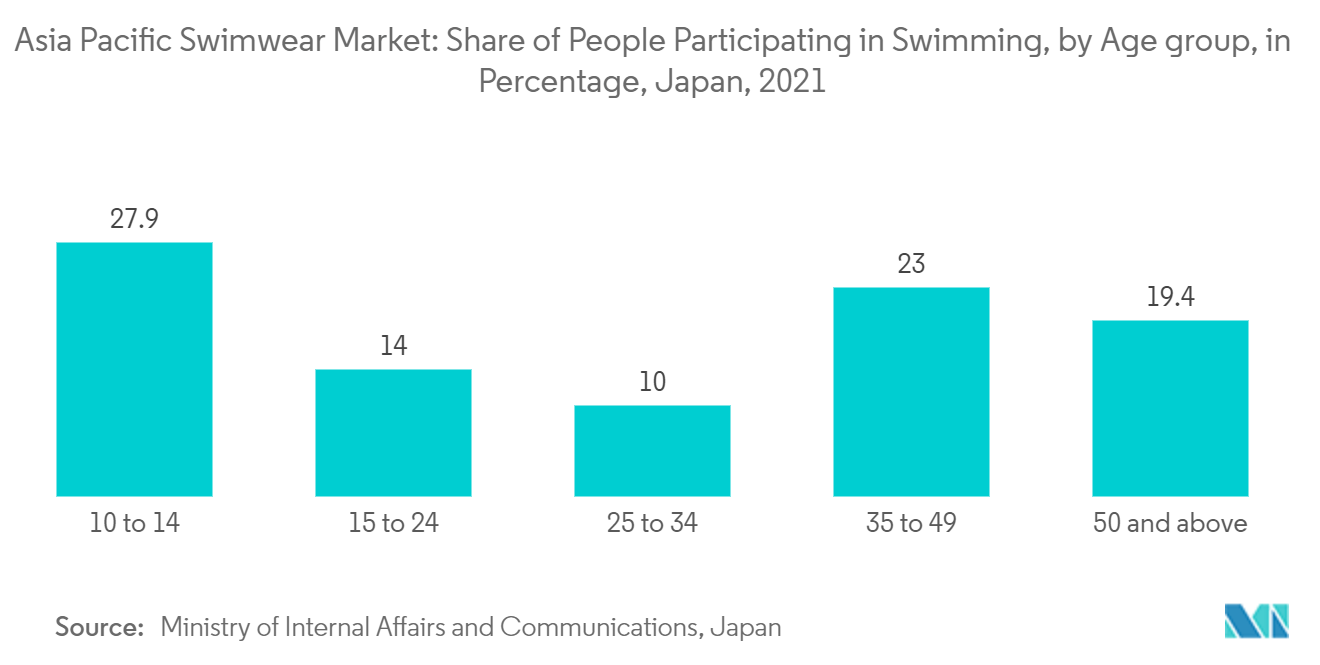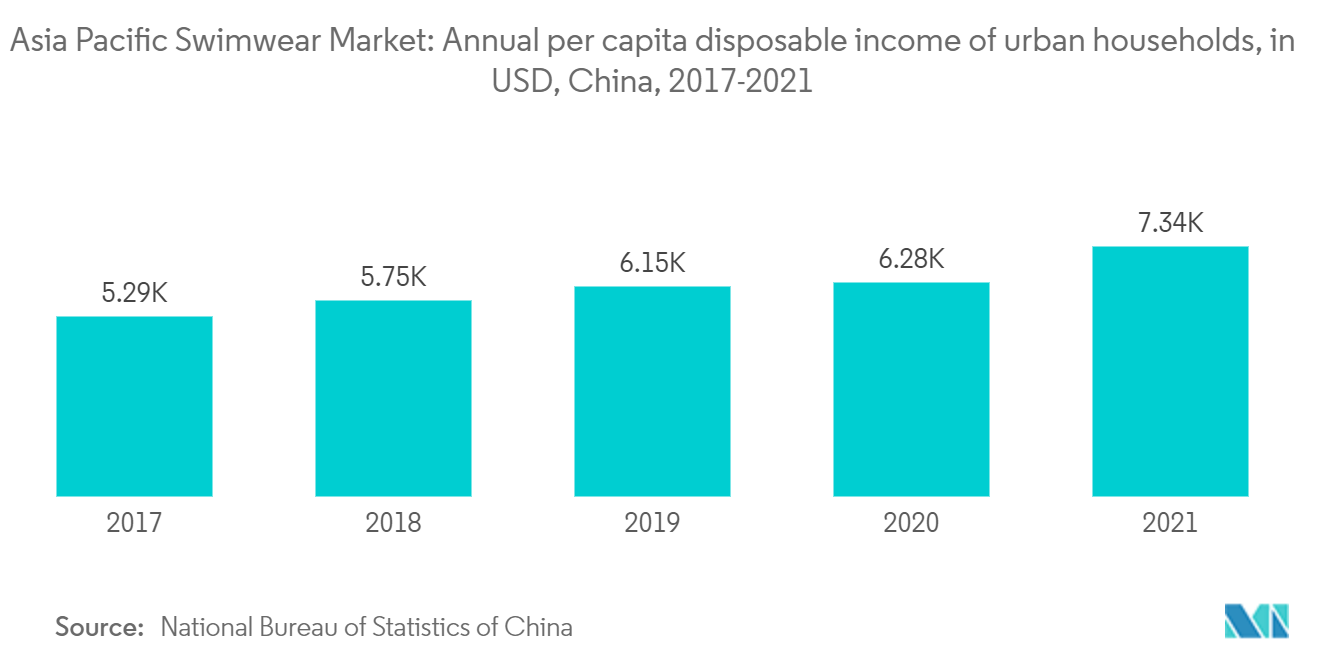Market Trends of Asia Pacific Swimwear Industry
This section covers the major market trends shaping the APAC Swimwear Market according to our research experts:
Increasing Inclination toward Swimming as a Fitness Sport
Swimming is a practice followed and imitated by consumers in the region both for the love of the activity and interest in fitness. Swimming is one of the most common recreational activities practiced by consumers in the market. Consumers tend to habituate to swimming as a recreational sport or activity at a very early age. As swimming is observed as a common hobby by individuals, consumers tend to purchase dedicated swimwear based on their frequency of participation. Moreover, the increase in the number of pools across the major cities in the region encourages individuals to take swimming up as a hobby and as a physical exercise to maintain a healthy body. For instance, about 6.38 million people in Japan engaged in swimming as a hobby in 2021, revealed the Ministry of Internal Affairs and Communications of Japan. Waterparks and private swimming pools are a few of the places where swimwear is preferred by consumers in the market. Hence, swimwear like goggles, caps, and swimsuits is in constant demand as there is a significant number of consumers with professional and amateur participation in swimming. This resulted in frequent product launches in the region. For instance, in May 2021, the Speedo company launched its new swimwear range for the Tokyo Olympics 2020.

Women's Swimwear is the Most Retailed Product in the Market
The demand for women's swimwear in the Asia-Pacific region has increased considerably due to the rise in spending power, especially amongst the younger generation, coupled with their increasing open-mindedness and exposure to other cultures, traveling, and increasing popularity of water-sports activities. According to the National Bureau of Statistics of China, the annual per capita disposable income of an urban household in 2020 was CNY 43,834 (USD 6,277.99), as compared to CNY 42,359 (USD 6,152.05) in 2019. With rising incomes, consumers have the money to travel to tropical destinations at home and abroad, creating a rapidly increasing women's swimsuit demand in China. Swimwear like one-piece swimwear, two-piece swimwear, and full-body swimwear suits are preferred by women. Swimwear with different fabrics is constantly in demand among consumers based on climatic conditions, comfort, and durability. Usually, products made from nylon, cotton blended with spandex, and more are being purchased by consumers in the market. Owing to the demand, manufacturers in the market are introducing new collections of swimwear for women. For instance, RUTT Australia launched its swimwear collection for women in Australia, inspired by 1970's aesthetics, in February 2022. The piko collection is a blend of recycled polyester and elastane. These products are often used in pools and beaches by consumers. Swimming pools with strict regulations allow consumers into pools only with proper swimwear. This resulted in increasing sales of swimwear in urban areas that are away from coastal regions in the market. With the widespread use of organized swimming pools, the market is expected to grow on a positive note in the studied region.

